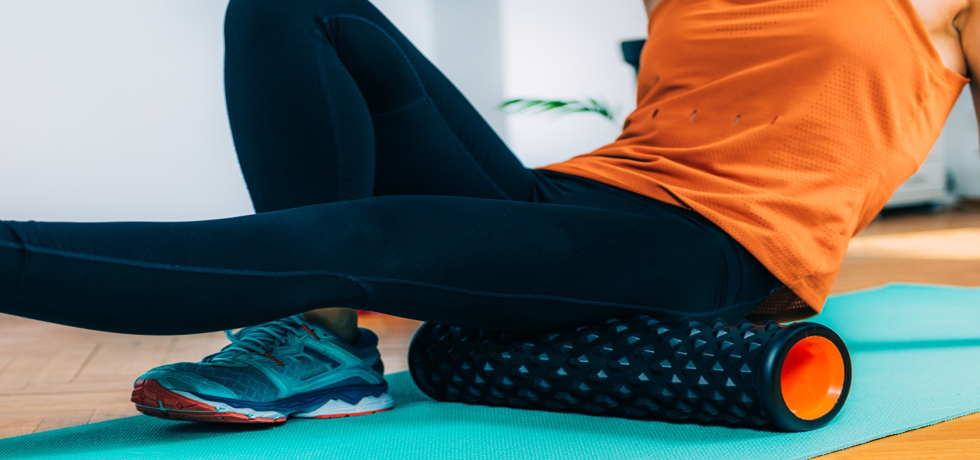
The Ultimate Guide to Exercise Recovery: Stretching and Foam Rolling Essentials
Introduction to Recovery Techniques
Recovery is a crucial component of any successful fitness routine. Among various strategies, stretching and foam rolling stand out as essential practices often overlooked by many. Both techniques are key for exercise recovery, helping to maintain flexibility, alleviate tension, and promote muscle recovery after workouts. In this guide, we will delve into the importance of these practices and how you can incorporate them into your routine effectively.
The Importance of Stretching for Recovery
Proper stretching plays a vital role in your overall exercise recovery. Neglecting to stretch may lead to injuries, as tight muscles are more prone to strains and tear. By integrating a solid stretching routine, you can enhance your performance while minimizing the risks associated with physical activity. Stretching not only helps improve joint mobility but also supports muscle recovery by restoring them to their original length after exertion. Incorporating both dynamic and static stretching into your workout plan is crucial for effective recovery.
Dynamic Stretching: A Pre-Workout Essential
Dynamic stretching involves movements that prepare your muscles for the demands of your workout. Unlike static stretching, which is performed post-workout, dynamic stretches involve active movements that improve agility and flexibility. Common examples include torso twists, walking lunges, and leg swings. By engaging in dynamic stretching before exercising, you help reduce the risk of injury and significantly enhance your performance, making it an essential part of your exercise recovery strategy.
Static Stretching: The Key to Post-Workout Recovery
Following your workout, static stretching allows your muscles to relax and return to their original length. This recovery method is vital for preventing stiffness and promoting better circulation. Holding stretches like hamstring stretches, quadriceps stretches, and shoulder stretches for about a minute can be incredibly beneficial in your post-exercise routine. This practice helps in reducing muscle soreness and enhancing recovery, ultimately leading to better performance in your future workouts.
Foam Rolling: Your Self-Care Recovery Tool
The use of foam rolling in your exercise recovery routine can significantly enhance the benefits of stretching. Think of foam rolling as a self-massage that targets areas of tension, breaking up knots and increasing blood flow to sore muscles. Regular foam rolling can alleviate muscle tightness, contributing to faster recovery. It’s particularly effective for areas like the legs, back, and arms. By incorporating foam rolling before and after your workouts, you can enhance your overall recovery process.
How to Effectively Use a Foam Roller
To use a foam roller effectively, position it under the area you wish to treat and gently roll back and forth. Spend more time on areas that feel particularly tight or painful. Foam rolling is beneficial after sessions when your muscles need extra care. You can also utilize static positions with the foam roller to enhance posture and relaxation. Through regular practice, foam rolling can become an indispensable part of your recovery toolbox.
Conclusion: Make Recovery a Priority
Prioritizing stretching and foam rolling in your fitness regime will improve your exercise recovery immensely. These methods not only help prevent injuries but also enhance overall performance. Begin incorporating these techniques into your routine today, and you’ll notice significant benefits in how you feel and recover after your workouts. For even more personalized advice tailored to your specific fitness goals, don’t hesitate to reach out to experienced professionals.
FAQs
1. How often should I stretch?
It’s recommended to stretch before and after each workout to ensure optimal results in flexibility and recovery.
It’s recommended to stretch before and after each workout to ensure optimal results in flexibility and recovery.
2. Can foam rolling help with muscle soreness?
Yes! Foam rolling is an excellent way to alleviate muscle soreness and tension after workouts.
For professional assistance and expert advice from leading dermatologists like Dr. Hital Patel, experience the benefits of The Ultimate Guide to Exercise Recovery: Stretching and Foam Rolling Essentials with Hair & Skin Specialist Dr. Hital Patel at The Skin Artistry. Our clinics in PDPU Gandhinagar, Vastrapur Ahmedabad, and Hyderabad (Visiting Consultant) offer top-quality care and personalized treatments. Visit us today to learn more about our services and take advantage of our special offers! For more insights, updates, or to collaborate, stay connected with The Skin Artistry.

